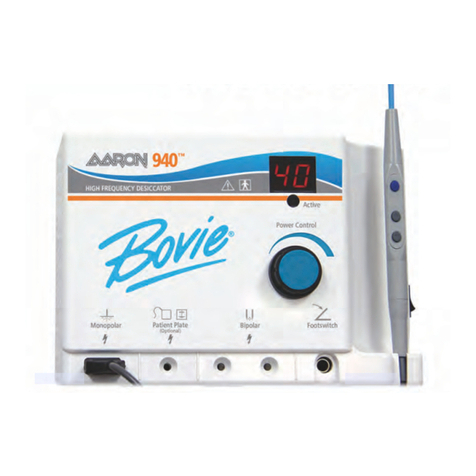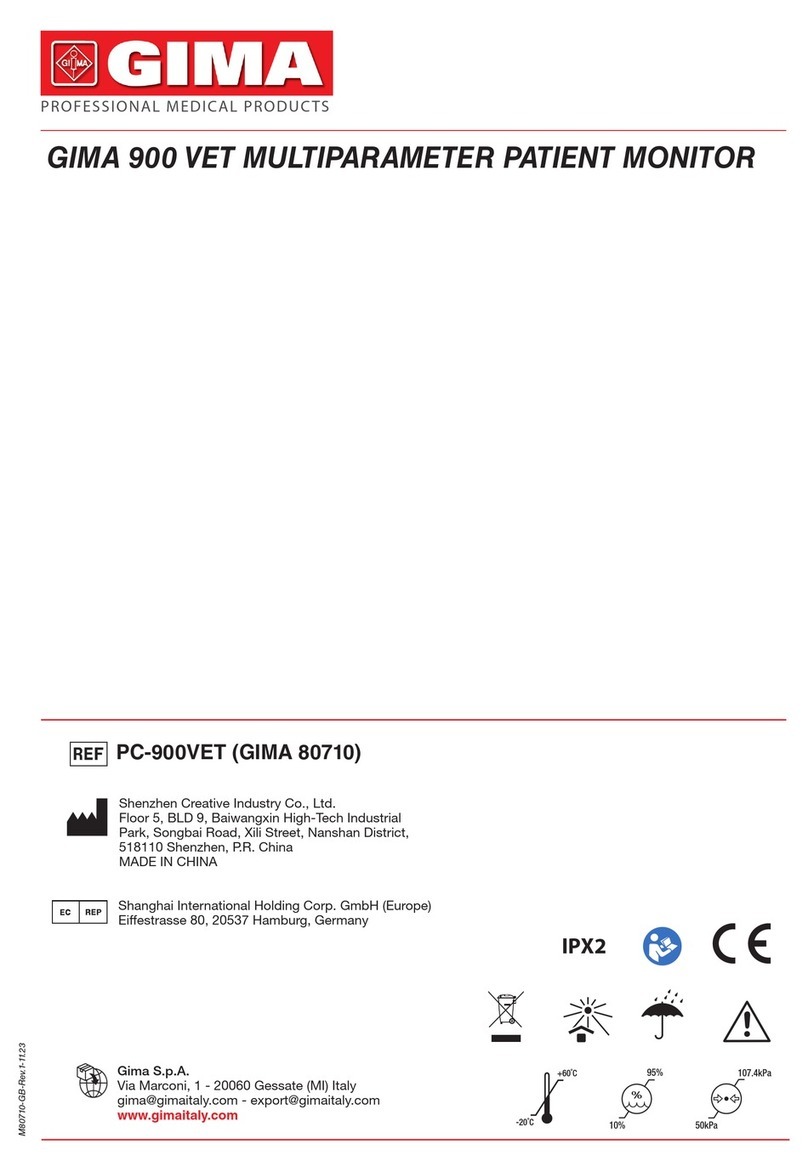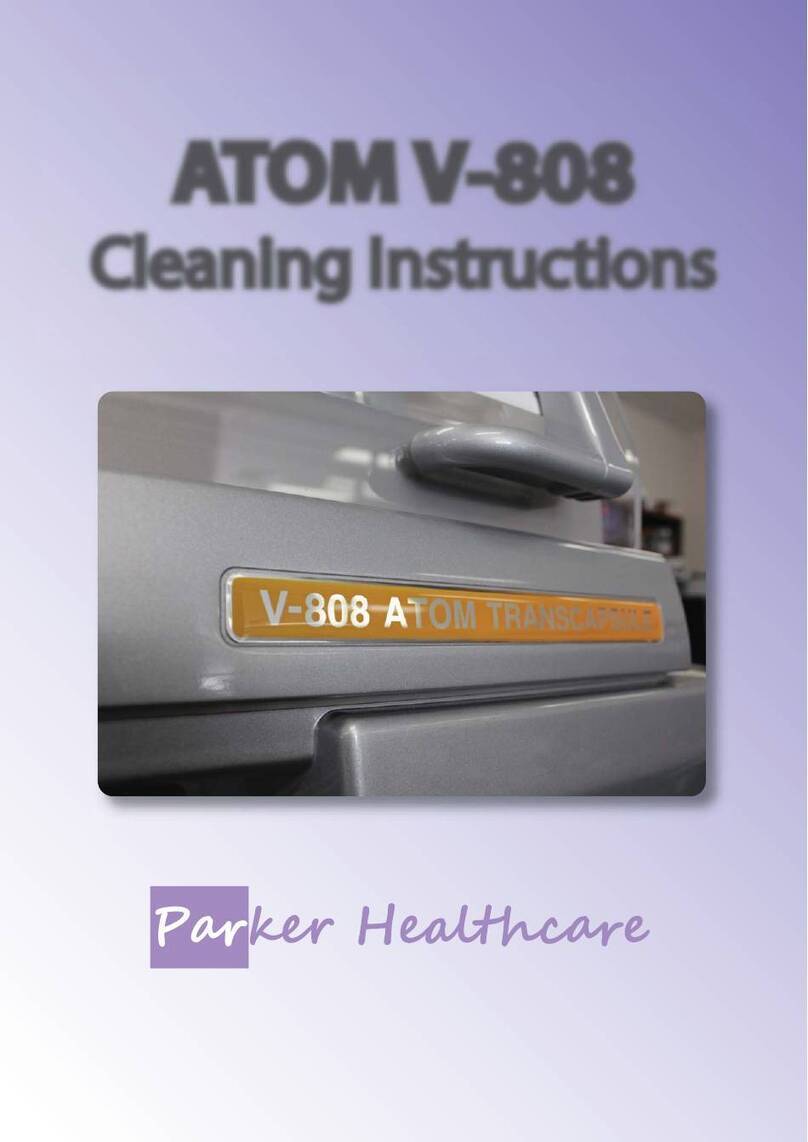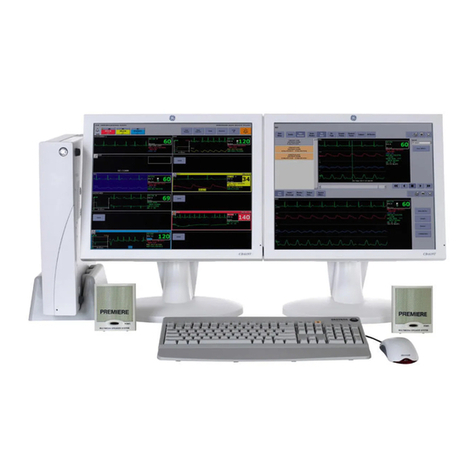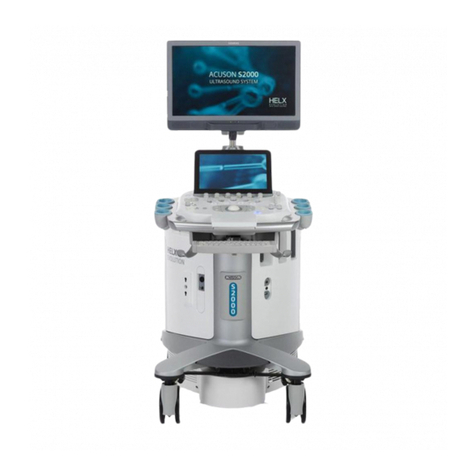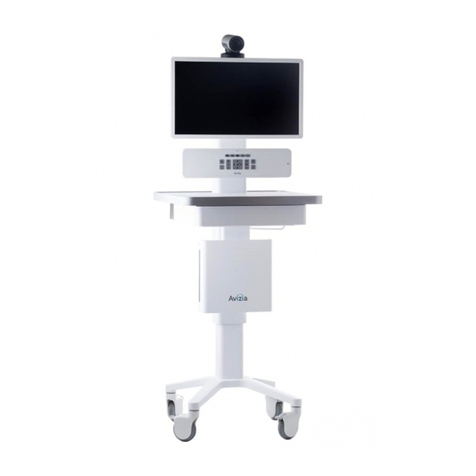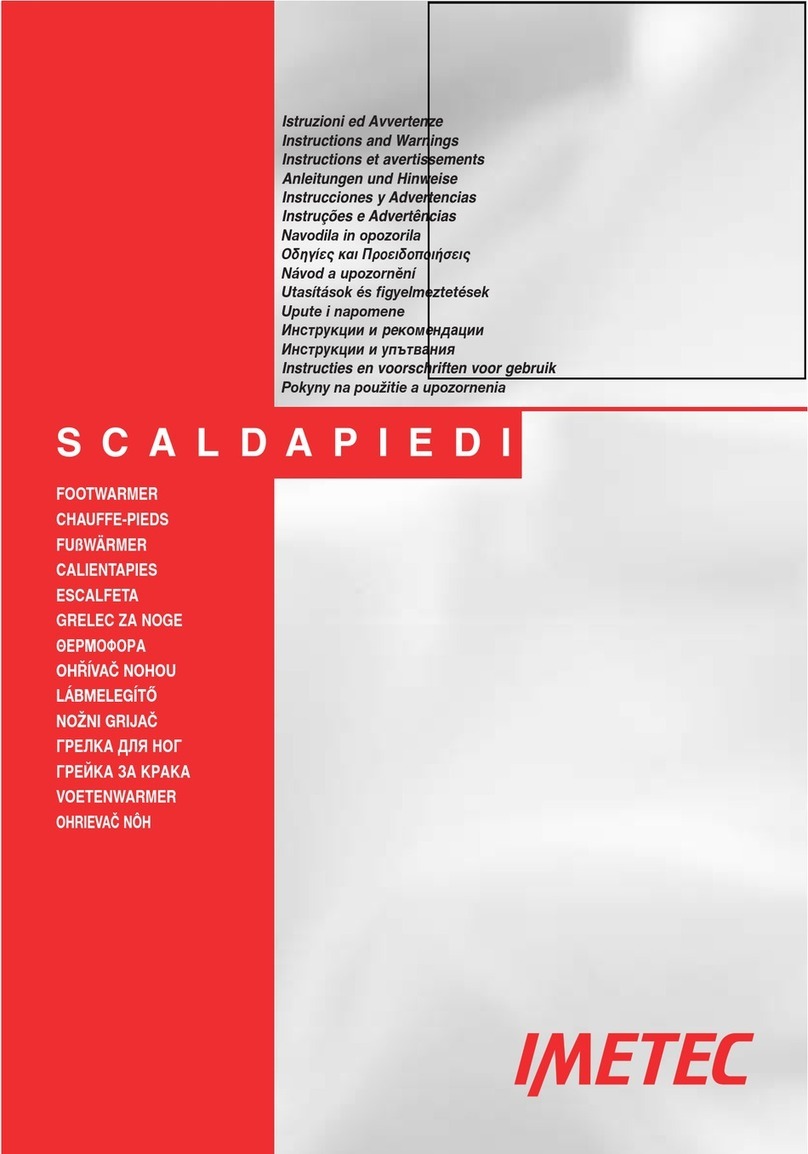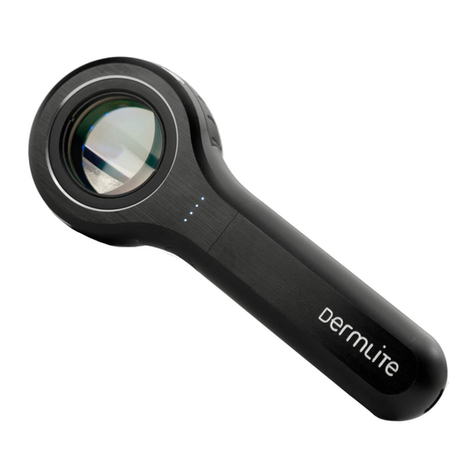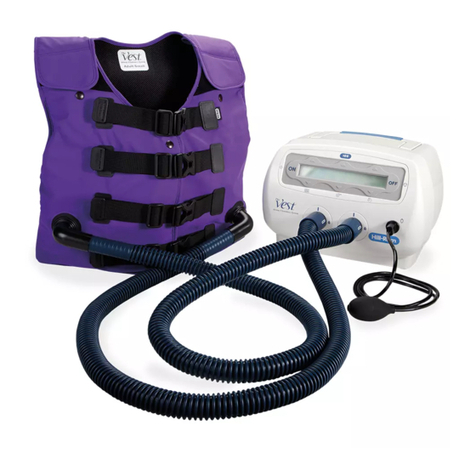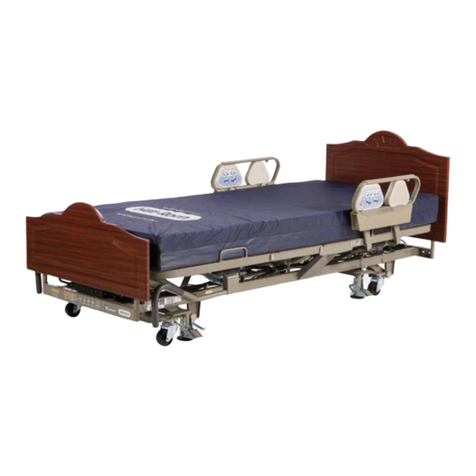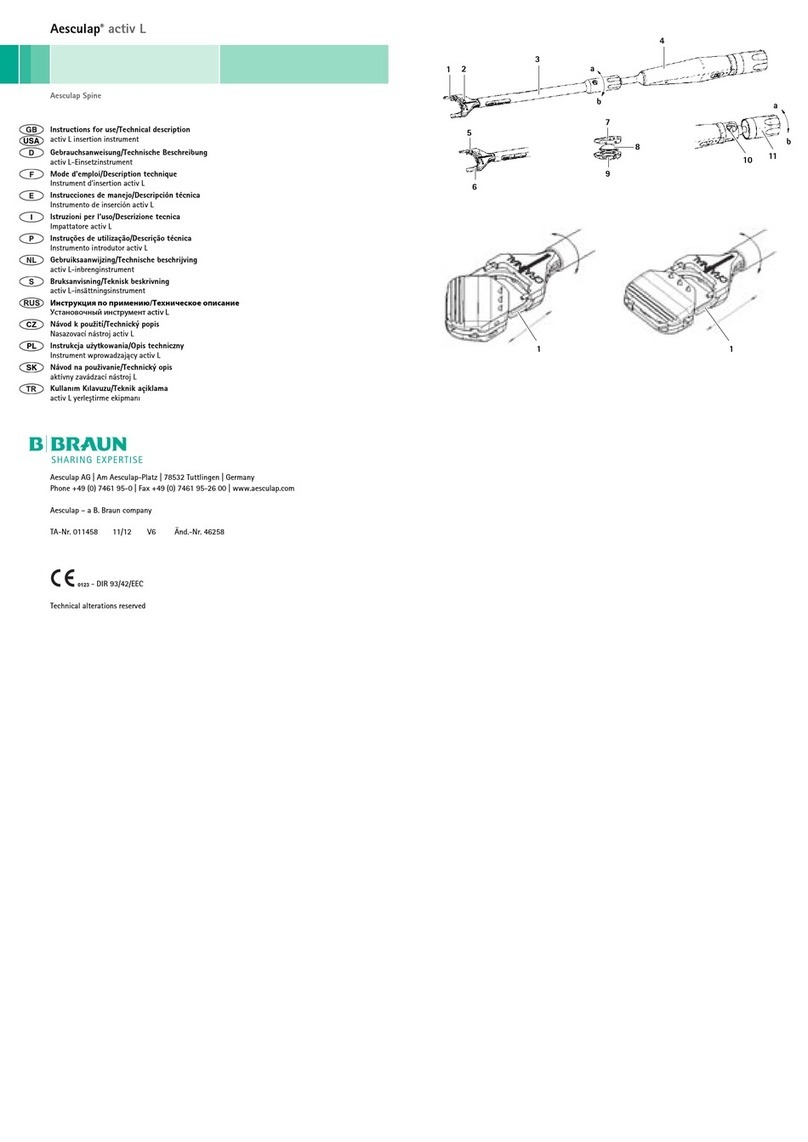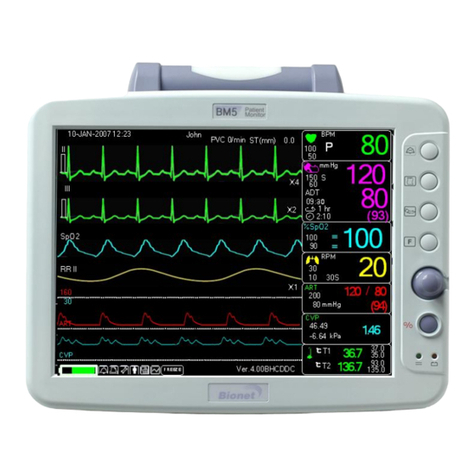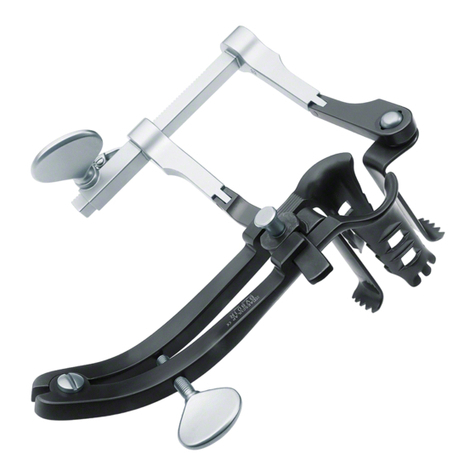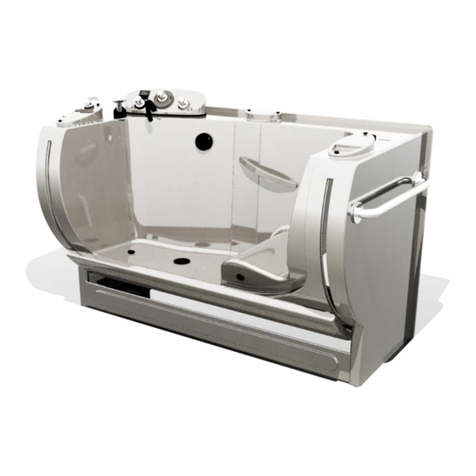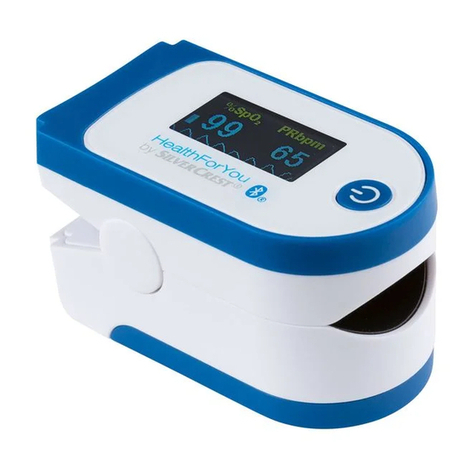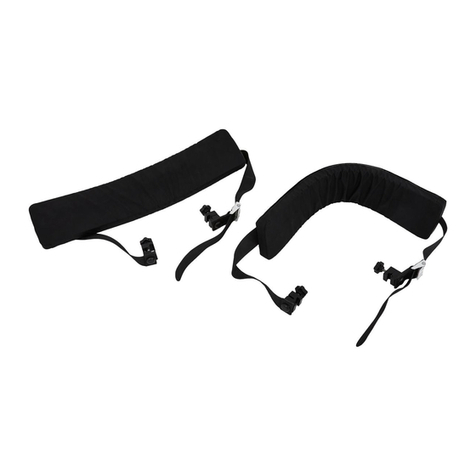Bovie Aaron 1250 User manual


iUser’s Guide • Aaron 1250
™
USER’S GUIDE

ii Bovie Medical Corporation

This manual and the equipment it describes are for use only by qualified medical professionals trained in the
particular technique and surgical procedure to be performed. It is intended as a guide for using the Aaron 1250™
Electrosurgical Generator only.
Additional technical information is available in the Aaron 1250™Electrosurgical Generator Service Manual. For the
latest user information and technical bulletins, visit www.boviemed.com.
Equipment Covered in this Manual
Aaron 1250 Electrosurgical Generator:
Model No.: A1250U
For Information Call
Bovie Medical Corporation• 5115 Ulmerton Road, Clearwater, Florida 33760 USA
U.S. Phone 1-800-537-2790 Fax 1-800-323-1640 • International Phone +1-727-384-2323 Fax +1-727-347-9144
Emergo Europe
Molenstraat 15
2513 BH, The Hague
The Netherlands
©2015Bovie Medical Corporation
All rights reserved.
Contents of this publication may not be reproduced without the written permission of
Bovie Medical Corporation.
Part number, MC-55-128-001 Rev. 8
CONVENTIONS USED IN
THIS GUIDE
WARNING
Indicates a potentially hazardous situation which, if not avoided, could result in death or serious
injury.
CAUTION
Indicates a hazardous situation which, if not avoided, may result in minor or moderate injury.
NOTICE
Indicates an operating tip, a maintenance suggestion, or a hazard that may result in product
damage.
iiiUser’s Guide • Aaron 1250
™

TABLE OF CONTENTS
Equipment Covered in this Manual ............................................................................iii
For Information Call ....................................................................................................iii
Conventions Used in this Guide.........................................................................................iii
Introducing the AARON 1250
™
Electrosurgical Generator ..............................................1-1
Indications for Use ...........................................................................................................1-2
Operating Principles ........................................................................................................1-2
Intended Use ...................................................................................................................1-2
Key Features ...................................................................................................................1-2
Components and Accessories .........................................................................................1-3
Additional Accessories.....................................................................................................1-3
Safety...............................................................................................................................1-3
Controls, Indicators, and Receptacles.................................................................................2-1
Front Panel ......................................................................................................................2-2
Symbols on the Front Panel ............................................................................................2-3
Cut and Blend Controls ...................................................................................................2-4
Coag and Bipolar Controls ..............................................................................................2-5
Indicators .........................................................................................................................2-6
Power Switch and Receptacles .......................................................................................2-7
Rear Panel.......................................................................................................................2-8
Symbols on the Rear Panel.............................................................................................2-8
Getting Started.......................................................................................................................3-1
Initial Inspection ...............................................................................................................3-2
Installation........................................................................................................................3-2
Function Checks ..............................................................................................................3-2
Setting Up the Unit...................................................................................................3-2
Checking the Return Electrode Alarm .....................................................................3-2
Confirming Modes............................................................................................................3-3
Checking Bipolar Mode (with footswitch).................................................................3-3
Checking Monopolar Mode (with footswitch)...........................................................3-3
Checking Monopolar Mode (with handswitch).........................................................3-3
Performance Checks .......................................................................................................3-3
Using the Aaron 1250
™
........................................................................................................4-1
Inspecting the Generator and Accessories......................................................................4-2
Setup Safety ....................................................................................................................4-2
Setting Up ........................................................................................................................4-4
Preparing for Monopolar Surgery ....................................................................................4-5
Applying the Return Electrode.................................................................................4-5
Connecting Accessories...........................................................................................4-5
Preparing for Bipolar Surgery ..........................................................................................4-5
Activation Safety ..............................................................................................................4-6
Activating the Unit............................................................................................................4-7
Maintaining the Aaron 1250
™
..............................................................................................5-1
Cleaning...........................................................................................................................5-2
Periodic Inspection ..........................................................................................................5-2
Fuse Replacement...........................................................................................................5-2
Troubleshooting.....................................................................................................................6-1
iv Bovie Medical Corporation

Repair Policy and Procedures..............................................................................................7-1
Responsibility of the Manufacturer ..................................................................................7-2
Returning the Generator for Service................................................................................7-2
Step 1 – Obtain a Returned Goods Authorization Number .....................................7-2
Step 2 – Clean the Generator..................................................................................7-2
Step 3 – Ship the Generator....................................................................................7-2
Technical Specifications ......................................................................................................A-1
Performance Characteristics ...........................................................................................A-2
Input Power .............................................................................................................A-2
Duty Cycle ...............................................................................................................A-2
Dimensions and Weight ..........................................................................................A-2
Operating Parameters .............................................................................................A-2
Transport .................................................................................................................A-2
Storage ....................................................................................................................A-2
Audio Volume ..........................................................................................................A-3
Return Electrode Sensing .......................................................................................A-3
Low Frequency (50-60 Hz) Leakage Current..........................................................A-3
High Frequency (RF) Leakage Current...................................................................A-4
Standards and IEC Classifications..................................................................................A-4
Operating Conditions...............................................................................................A-4
Class I Equipment (IEC 60601-1) ...........................................................................A-4
Type BF Equipment (IEC 60601-1) / Defibrillator Proof..........................................A-4
Drip Proof (IEC 60601-2-2) .....................................................................................A-4
Electromagnetic Interference...................................................................................A-4
Electromagnetic Compatibility (IEC 60601-1-2 and IEC 60601-2-2) ......................A-4
Voltage Transients (Emergency Generator Mains Transfer)...................................A-4
EMC Compliance ............................................................................................................A-4
Output Characteristics.....................................................................................................A-8
Maximum Output for Monopolar and Bipolar Modes ..............................................A-8
Output Power Curves ......................................................................................................A-9
Warranty.................................................................................................................................B-1
vUser’s Guide • Aaron 1250
™

LIST OF FIGURES
Figure 2 – 1 Layout of controls, indicators, and receptacles on the front panel ....................2-2
Figure 2 – 2 Controls for the Cut and Blend Modes ..............................................................2-4
Figure 2 – 3 Controls for the Coagulation, Fulguration, and Bipolar Modes..........................2-5
Figure 2 – 4 Indicators for power, return electrodes, and footswitch control .........................2-6
Figure 2 – 5 Location of the unit power switch and front panel receptacles..........................2-7
Figure 2 – 6 Layout of connectors and controls on the rear panel ........................................2-8
Figure 5 – 1 Fuse holder ......................................................................................................5-2
Figure A – 1 Output voltage (Vpeak) versus power setting (Cut, Coag) .............................A-9
Figure A – 2 Output voltage (Vpeak) versus power setting (Bipolar) .................................A-9
Figure A – 3 Output power versus power setting for all modes.........................................A-10
Figure A – 4 Output power vs impedance for Cut mode ...................................................A-10
Figure A – 5 Output power vs impedance for Blend mode ...............................................A-11
Figure A – 6 Output power versus impedance for Coagulation mode ...............................A-11
Figure A – 7 Output power versus impedance for Fulguration mode ................................A-12
Figure A – 8 Output power vs impedance for Bipolar mode..............................................A-12
vi Bovie Medical Corporation

1-1User’s Guide • Aaron 1250
™
INTRODUCING THE AARON 1250™
ELECTROSURGICAL GENERATOR
This section includes the following information:
●Indications for Use
●Operating Principles
●Intended Use
●Key Features
●Components and Accessories
●Safety
●Contraindications
●Application Specification
CAUTIONS
Read all warnings, cautions, and instructions provided with this generator before using.
Read the instructions, warnings, and cautions provided with electrosurgical accessories before
using. Specific instructions are not included in this manual.

INDICATIONS FOR USE
The Aaron 1250™ Electrosurgical Generator is used to deliver RF energy via an assortment of surgical devices to cut
and coagulate different kinds of tissue. For the latest user information and technical bulletins, visit
www.boviemed.com.
OPERATING PRINCIPLES
The Aaron 1250™ Generator is a high frequency isolated generator featuring cutting up to 120 watts, a blend mode,
2 coagulation modes and 1 bipolar mode. The generator offers a monopolar handpiece output, monopolar foot con-
trolled output and bipolar foot controlled output. . The generator has a return electrode contact and quality moni-
toring system (NEM) to reduce the risk of patient burns at the return electrode site. The pad-sensing feature allows
the user to use either a split or solid return electrode.
INTENDED USE
The Aaron 1250™ Electrosurgical Generator is intended for cutting, coagulation, ablation of tissue in general,
gynecologic, orthopedic, ENT and urological procedures performed in an operating suite and procedure room.
NOTICE:
The Aaron 1250™ is not intended for Tubal Ligation.
KEY FEATURES
The Aaron 1250™ Electrosurgical Generator includes the latest technology. This unit offers unsurpassed perform-
ance, flexibility, reliability, and convenience.
It includes the following features:
• Two levels of coagulation: Pinpoint Coagulation and Fulguration
Pinpoint Coagulation provides precise control of bleeding in localized areas.
Fulguration provides greater control of bleeding in highly vascular tissue over broad surface areas.
• Return electrode sensing and contact quality monitoring
The Aaron 1250™ incorporates a return electrode contact quality monitoring system (Bovie NEM™).
This system determines the type of patient return electrode: single or split plate. The system also continually
monitors the contact quality between the patient and the split-plate return electrode. This feature is designed to
eliminate patient burns at the return electrode site.
NOTICES:
The Bovie NEM™ system recommends that you use a split-plate patient return electrode.
Before activation, pad placement and visual verification of the split return electrode (split pad)
indicator on the front panel is recommended. After connecting the split pad to the generator and
placing the split pad securely to the patient, give the unit 5 to 10 seconds to recognize the split
pad. The split pad indicator will illuminate green. If the split pad and cord are attached to the gen-
erator without secure contact to the patient, the alarm indicator will illuminate red.
• Memory
The unit automatically powers up to the Cut and Coag modes and their last selected power settings.
• Isolated RF output
This minimizes the potential of alternate site burns.
• Standard connectors
These connectors accept the latest monopolar and bipolar instruments.
1-2 Bovie Medical Corporation

• Self diagnostics
These diagnostics continually monitor the unit to ensure proper performance.
COMPONENTS AND ACCESSORIES
To avoid incompatibility and unsafe operation, we recommend using the following Bovie®brand accessories supplied
with your generator:
• Aaron 1250™ Electrosurgical Generator
• Hospital-grade power cords - 09-039-001; 09-035-001
• User’s Guide (s)
• One disposable pencil - ESP1-S
ADDITIONAL ACCESSORIES
To avoid incompatibility and unsafe operation, we recommend using the following Bovie accessories with the A1250™:
• BV-1253B - Footswitch for Monopolar and Bipolar procedures
SAFETY
The safe and effective use of electrosurgery depends to a large degree on factors solely under the control of the
operator. There is no substitute for a properly trained and vigilant medical staff. It is important that they read,
understand, and follow the operating instructions supplied with this electrosurgical equipment.
Physicians have used electrosurgical equipment safely in numerous procedures. Before starting any surgical procedure,
the surgeon should be familiar with the medical literature, complications, and hazards of using electrosurgery in that
procedure.
To promote the safe use of the Aaron A1250™ Electrosurgical Generator, this section presents the warnings and
cautions that appear throughout this user’s guide. So that you can operate this equipment with maximum safety,
it is important that you read, understand, and follow the instructions in these warnings and cautions. It is also
important that you read, understand, and follow the instructions for use in this user’s guide.
WARNINGS
Hazardous Electrical Output - This equipment is for use only by trained, licensed physicians.
Danger: Fire / Explosion Hazard - Do not use the Aaron 1250™ electrosurgical generator in the
presence of flammable anesthetics.
Fire / Explosion Hazard - The following substances will contribute to increased fire and
explosion hazards in the operating room:
• Flammable substances (such as alcohol based skin prepping agents and tinctures)
• Naturally occurring flammable gases which may accumulate in body cavities such as
the bowel
• Oxygen enriched atmospheres
• Oxidizing agents (such as nitrous oxide [N20] atmospheres).
The sparking and heating associated with electrosurgery can provide an ignition source.
Observe fire precautions at all times. When using electrosurgery in the same room with any
of these substances or gases, prevent their accumulation or pooling under surgical drapes,
or within the area where electrosurgery is performed.
The use of flammable anesthetics or oxidizing gases such as nitrous oxide (N2O) and oxygen
should be avoided if a surgical procedure is carried out in the region of the thorax or the head,
unless these agents are sucked away.
Non-flammable agents should be used for cleaning and disinfection wherever possible.
Flammable agents used for cleaning or disinfecting, or as solvents of adhesives, should be
allowed to evaporate before the application if HF surgery. There is a risk of pooling flammable
solutions under the patient or in body depressions such as the umbilicus, and in body cavities
such as the vagina. Any fluids pooled in these areas should be mopped up before H.F. surgical
1-3User’s Guide • Aaron 1250
™
• Three electrodes - ES20 (ball); ES02 (needle); ES01 (blade)
• One reusable grounding cord - A1252C
• Five disposable split grounding pads -ESRE-1
• ESU Series I DVD

equipment is used. Attention should be called to the danger of ignition of endogenous gases.
Some materials, for example cotton, wool and gauze, when saturated with oxygen may be ignited
by sparks produced in Normal Use of the HF surgical equipment.
No modification of this equipment is allowed.
Electric Shock Hazard - Connect the power cord to a properly polarized and grounded power
source with the frequency and voltage characteristics that match those listed on the back of the
unit. Do not use power plug adapters.
To avoid risk of electric shock, this equipment must only be connected to a supply mains with
protective earth.
Active cord removal during activation could result in a shock to the operator at the generator con-
nector plug interface should activation occur by footswitch.
Electric Shock Hazard - Always turn off and unplug the generator before cleaning.
Fire Hazard - Do not use extension cords.
Patient Safety - Use the generator only if the self-test has been completed as described.
Otherwise, inaccurate power outputs may result.
Do not use electrosurgical equipment unless properly trained to use it in the specific procedure
being undertaken. Use by physicians without such training has resulted in serious, unintended
patient injury, including bowel perforation and unintended, irreversible tissue necrosis.
Failure of the HF SURGICAL EQUIPMENT could result in an unintended increase of output power.
Use the lowest output setting necessary to achieve the desired surgical effect. Use the active elec-
trode only for the minimum time necessary in order to lessen the possibility of unintended burn
injury. Pediatric applications and/or procedures performed on small anatomic structures
may require reduced power settings. The higher the current flow, and the longer the current is
applied, the greater the possibility of unintended thermal damage to tissue, especially during
use on small structures.
Avoid using power settings that would exceed the highest maximum voltage that is acceptable for
each accessory. Choose only accessories that will withstand each mode and power setting.
Use of the RF Electrosurgical Generator at minimal power setting to get the expected clinical
effect and for a normal clinical procedure time will not cause a surface skin temperature under the
Bovie ESRS or ESRC patient return pads to rise above 41°C when the skin in prepared properly
and the pad is attached properly. However be aware that extended surgical times particularly at
high power will cause a continued temperature rise at the skin and return pad interface due to RF
current return to the generator.
The output power selected should be as low as possible for the intended purpose. Certain devices
or accessories may present a safety hazard at low power settings.
Apparent low output or failure of the A1250 RF to function correctly at the normal operating set-
tings may indicate faulty application of the neutral electrode or poor contact in its connections. In
this case, the application of the neutral electrode and its connections should be checked before
selecting a higher output power.
To avoid incompatibility and unsafe operation, use suitable cables, accessories, active and neutral
electrodes, including values for the highest allowed H.F. peak voltage.
Connected accessories need be rated for at least the maximum peak output voltage of the H.F.
generator set at the intended output control setting in the intended operating mode.
For surgical procedures where the high frequency current could flow through parts of the body
having a relatively small cross-sectional area, the use of bipolar techniques may be desirable to
avoid unwanted coagulation.
For all Monopolar modes, any associated equipment and active electrodes must be rated to with
stand the combination of output voltage, vp-p and crest factor as stated in Appendix A of this
manual.
Associated equipment and accessories used must be rated to withstand the combination of the
Vpeak rating and Crest Factor for the following RF modes, Blend, Pinpoint and Spray.When using
1-4 Bovie Medical Corporation

Cut mode, associated equipment and active accessories should be selected that have a rated
accessory voltage equal to or greater than 1250 Vpeak max.
When using Blend mode, associated equipment and active accessories should be selected that
have a rated accessory voltage equal to or greater than 1850 Vpeak max.
When using Coagulation mode, associated equipment and active accessories should be selected
that have a rated accessory voltage equal to or greater than 3300 Vpeak max.
When using Fulguration mode, associated equipment and active accessories should be selected
that have a rated accessory voltage equal to or greater than 3900 Vpeak max.
When using Bipolar mode, associated equipment and active accessories should be selected that
have a rated accessory voltage equal to or greater than 1200 Vpeak max.
Use electrosurgery with caution in the presence of internal or external devices such as pacemak-
ers or pulse generators. Interference produced by the use of electrosurgical devices can cause
devices such as pacemakers to enter an asynchronous mode or can block the pacemaker effect
entirely. Consult the device manufacturer or hospital Cardiology Department for further information
when use of electrosurgical appliances is planned for patients with cardiac pacemakers or other
implantable devices.
If the patient has an Implantable Cardioverter Defibrillator (ICD), contact the ICD manufacturer
for instructions before performing an electrosurgical procedure. Electrosurgery may cause
multiple activation of ICDs.
The entire area of the neutral electrode should be reliably attached to the patient’s body and as
close to operating field as possible. Refer to instructions for use.
The PATIENT should not come into contact with metal parts which are earthed or which have an
appreciable capacitance to earth (for example operating table supports, etc.).
In some circumstances, potential exists for alternate site burns at points of skin contact
(e.g., between the arm and the side of the body). This occurs when electrosurgical current
seeks a path to the patient return electrode that includes the skin-to-skin contact point.
Current passing through small skin-to-skin contact points is concentrated and may cause
a burn. This is true for grounded, ground referenced, and isolated output generators.
When HF SURGICAL EQUIPMENT and physiological monitoring equipment are used simultane-
ously on the same PATIENT, any monitoring electrodes should be placed as far as possible from
the surgical electrodes. In all cases, monitoring systems incorporating HIGH FREQUENCY current
limiting devices are recommended.
To reduce the potential for alternate site burns, do one or more of the following:
• Avoid skin-to-skin contact points, such as fingers touching leg, when positioning the patient.
• Place 5 to 8 cm (2 to 3 in.) of dry gauze between contact points to ensure that contact does
not occur.
• Position the patient return electrode to provide a direct current route between the surgical
site and the return electrode which avoids skin-to-skin contact areas.
• In addition, place patient return electrodes according to the manufacturer’s instructions.
Potential for alternate site burns increases if the return electrode is compromised. Bovie Medical
recommends the use of split patient return electrodes and Bovie Medical generators with a
contact quality monitoring system.
Do not wrap the accessory cords or patient return electrode cords around metal objects. This
may induce currents that could lead to shocks, fires, or injury to the patient or surgical team.
The PATIENT leads should be positioned in such a way that contact with the PATIENT or other
leads is avoided.
Minor neuromuscular stimulation is possible when arcs between the ACTIVE ELECTRODE and
tissue occur. The generator has been designed to minimize the possibility of neuromuscular
stimulation.
Accessories must be connected to the proper receptacle type. In particular, bipolar accessories
must be connected to the Bipolar Instrument output jack only. Improper connection may result in
inadvertent generator activation.
Some accessories have multiple buttons that can deliver different surgical effects. Verify
accessory features and proper mode settings prior to activation.
1-5User’s Guide • Aaron 1250
™

The output power selected should be as low as possible for the intended purpose. Certain devices
or ACCESSORIES may present an unacceptable RISK at low power settings.
Unless a compatible MONITORING NE is used with a CONTACT QUALITY MONITOR, loss of
safe contact between the NE and the PATIENT will not result in an auditory alarm.
The generator is equipped with a return electrode sensing and contact quality monitoring system
(NEM), which monitors the quality of the patient return electrode connection. When a correctly
functioning single plate return electrode is connected to the generator, the NEM verifies the con-
nections between the generator and the single return electrode. It DOES NOT verify that a single
return electrode is in contact with the patient. When using a split return electrode, the NEM con-
firms the total resistance is within the preset safety range. Proper application (such as hydrating
the patient’s skin) and visual inspection of the patient return electrode is required for safe
operation.
CAUTIONS
At no time should you touch the active electrode or bipolar forceps. A burn could result.
Do not stack equipment on top of the generator or place the generator on top of electrical
equipment. These configurations are unstable and/or do not allow adequate cooling.
Provide as much distance as possible between the electrosurgical generator and other electronic
equipment (such as monitors). An activated electrosurgical generator may cause interference
with them.
Nonfunction of the generator may cause interruption of surgery. A backup generator should be
available for use.
Do not turn the activation tone down to an inaudible level. The activation tone alerts the surgical
team when an accessory is active.
When using a smoke evacuator in conjunction with the electrosurgical generator, place the smoke
evacuator a distance from the generator and set the generator volume control at a level that
ensures that the activation tones can be heard.
The use of high frequency current can interfere with the function of other electromagnetic
equipment.
When high frequency surgical equipment and physiological monitoring equipment are used
simultaneously on the same patient, place any monitoring electrodes as far as possible from
the surgical electrodes.
Do not use needles as monitoring electrodes during electrosurgical procedures. Inadvertent
electrosurgical burns may result.
To avoid the possibility of a burn to the patient, when using a split pad do not activate the unit if
the solid pad indicator is illuminated green or the red alarm indicator remains illuminated red. This
could indicate improper pad placement or a faulty NEM (contact quality monitor) circuit.
To avoid the possibility of an electrosurgical burn to either the patient or the physicians, do
not allow the patient to come in contact with a grounded metal object during activation.
When activating the unit, do not allow direct skin contact between the patient and the physician.
Remove any loose fitting jewelry from the patient before activation.
Examine all accessories and connections to the electrosurgical generator before use. Ensure that
the accessories function as intended. Improper connection may result in arcs, sparks, accessory
malfunction, or unintended surgical effects.
Accessories must be connected to the proper receptacle type. In particular, bipolar accessories
must be connected to the Bipolar Instrument output jack only. Improper connection may result in
inadvertent generator activation.
When not using active accessories, place them in a holster or in a clean, dry, nonconductive,
and highly visible area not in contact with the patient. Inadvertent contact with the patient may
result in burns.
1-6 Bovie Medical Corporation

Studies have shown that smoke generated during electrosurgical procedures can be potentially
harmful to patients and the surgical team. These studies recommend adequately ventilating the
smoke by using a surgical smoke evacuator or other means.1
1. U.S. Department of Health and Human Services. National Institute for Occupational Safety
and Health (NIOSH). Control of Smoke from Laser / Electric Surgical Procedures. HAZARD
CONTROLS, Publication No. 96-128, September, 1996.
CONTRAINDICATIONS
There are no known contraindications.
NOTICES
If required by local codes, connect the generator to the hospital equalization connector with an
equipotential cable.
Do not clean the generator with abrasive cleaning or disinfectant compounds, solvents, or other
materials that could scratch the panels or damage the generator.
APPLICATION SPECIFICATION
Operating Conditions
RF energy is generated and passed through an interconnecting cable to an accessory where the energy is delivered to cut, coagulate
and ablate tissue.
Description
• The Aaron 1250U High Frequency Electrosurgical Generators models are intended to be used for all
electrosurgical cut, blend, coagulation, fulguration and bipolar procedures.
Medical Purpose / Indication
• Removal and destruction of skin lesions
• Electrosurgical cutting, blending, coagulation, fulguration and bipolar procedures of tissue to aid surgeon
or physician in performing required procedures.
Site Condition
• Clean and protect from infection from start through completion of procedure.
• Note the follow Conditions of visibility for use:
- Ambient luminance range: 100 lx to 1,500 lx
- Viewing distance: 20 cm to 200 cm
- Viewing angle: normal to the display ± 30°
Site of use
• Site of use: Tissue (ligament, cartilage)
Patient population
• Age: newborn to geriatric
• Weight: >2.5 kg
• Health: no restrictions
• Nationality: no restrictions
• Patient state: alert, relaxed maybe sedated, possible local anesthesia
– Patient should not be User
1-7User’s Guide • Aaron 1250
™
Ambient luminance range 100 lx to 1,500 lx
Viewing distance 20 cm to 200 cm
Viewing angle normal to the display ± 30˚

Intended User Profile
• Education: Trained physician, physicians assistance, clinicians
- No maximum
• Knowledge:
- Minimum:
o understands electrosurgery and electrosurgical techniques
o read and understand supplied “User’s Guide” (accompanying document)
o understands hygiene
- No maximum
• Language understanding:
- Languages as specified in the marketing distribution plan
• Experience:
- Minimum:
o Some training on techniques or training under surveillance/supervision
o Other: no special experience needed
o No maximum
• Permissible impairments:
- Mild reading vision impairment or corrected vision to 20/20
- impaired by 40 % resulting in 60 % of normal hearing at 500 Hz to 2 kHz
1-8 Bovie Medical Corporation

2-1User’s Guide • Aaron 1250
™
CONTROLS, INDICATORS, AND RECEPTACLES
This section describes:
●The Front and Rear Panels
●Controls, Indicators, Receptacles, the Fuse Drawer, and Ports

FRONT PANEL
Figure 2 – 1 Layout of controls, indicators, and receptacles on the front panel
2-2 Bovie Medical Corporation

SYMBOLS ON THE FRONT PANEL
Refer to the following table for descriptions of symbols found on the front panel of the Aaron 1250™.
2-3User’s Guide • Aaron 1250
™
SYMBOLS DESCRIPTION
Cut Controls
Cut Mode
Blend Mode
Coag Controls
Coagulation Mode
Fulguration Mode
Bipolar Controls
Bipolar Mode
Indicators
Split Return Electrode
Solid Return Electrode
Regulatory Symbology
Mandatory: Refer to instruction manual/guide
Defibrillator Proof Type BF Equipment
RF Isolated – patient connections are isolated from earth at high frequency.
Warning: Dangerous voltage.
Power Switch and Handpiece Connectors
Patient Return Electrode
Monopolar Output
Bipolar Output

CUT AND BLEND CONTROLS
Figure 2 – 2 Controls for the Cut and Blend Modes
2-4 Bovie Medical Corporation
Cut
Blend
Cut
Cut Indicator
Illuminates when
Pure Cut Mode
is selected.
Cut and Blend
Activation Indicator
Illuminates when you
activate either Pure
Cut or Blend Mode.
Cut and Blend Power Control Dial
Increases or decreases the Cut or Blend
power output in increments of 1 watt.
Cut and Blend
Power Display (watts)
Indicates the power set for
the Pure Cut or Blend Mode.
Blend Indicator
Illuminates when
Blend Mode
is selected.
Cut Selector
When pressed, selects
the Pure Cut Mode.
Blend Selector
When pressed, selects
the Blend Mode.

COAG AND BIPOLAR CONTROLS
Figure 2 – 3 Controls for the Coagulation, Fulguration, and Bipolar Modes
2-5User’s Guide • Aaron 1250
™
Coag
Coagulation
Fulguration
Bipolar
Coag and Bipolar
Activation Indicator
Illuminates when you
activate Coagulation,
Fulguration, or
Bipolar Mode.
Coag and Bipolar Power Control Dial
Increases or decreases the Coag or Bipolar
power output in increments of 1 watt.
Coag and Bipolar
Power Display (watts)
Indicates the power set for
any Coag or Bipolar Mode.
Coagulation Indicator
Illuminates when
Coagulation Mode
is selected.
Fulguration Indicator
Illuminates when
Fulguration Mode
is selected.
Bipolar Indicator
Illuminates when
Bipolar Mode
is selected.
Coagulation Selector
When pressed, selects
the Coagulation Mode.
Fulguration Selector
When pressed, selects
the Fulguration Mode.
Bipolar Selector
When pressed, selects
the Bipolar Mode.
Other manuals for Aaron 1250
1
Table of contents
Other Bovie Medical Equipment manuals
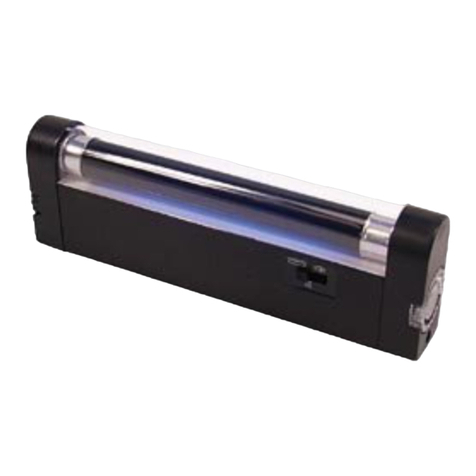
Bovie
Bovie UV59 User manual
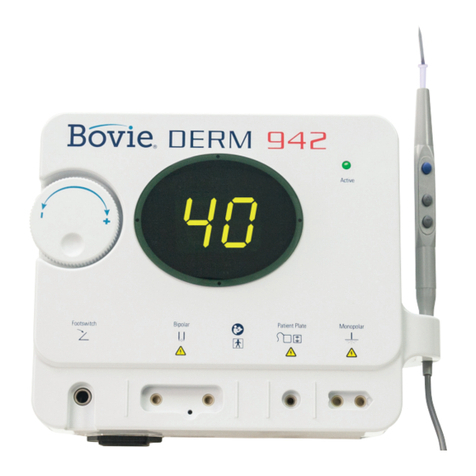
Bovie
Bovie DERM 941 User manual
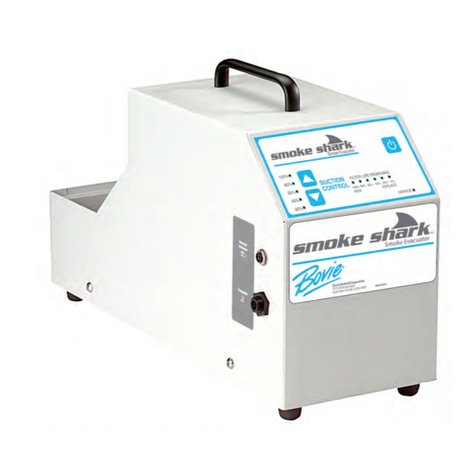
Bovie
Bovie Smoke Shark SE01 User manual

Bovie
Bovie SPECIALIST PRO User manual
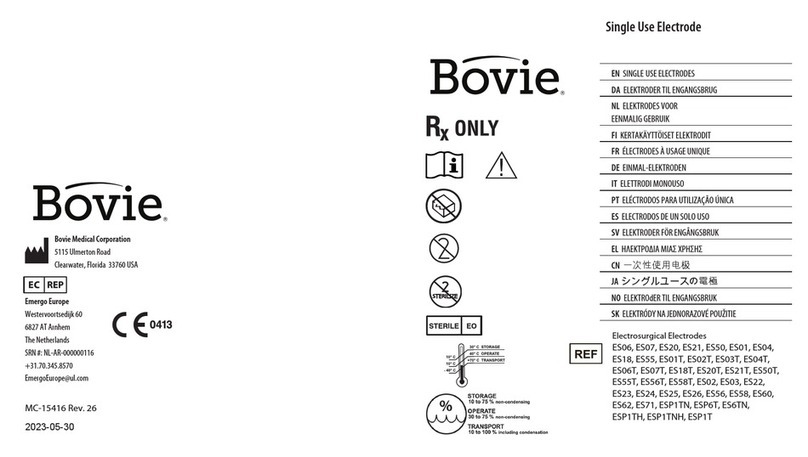
Bovie
Bovie ES06 User manual
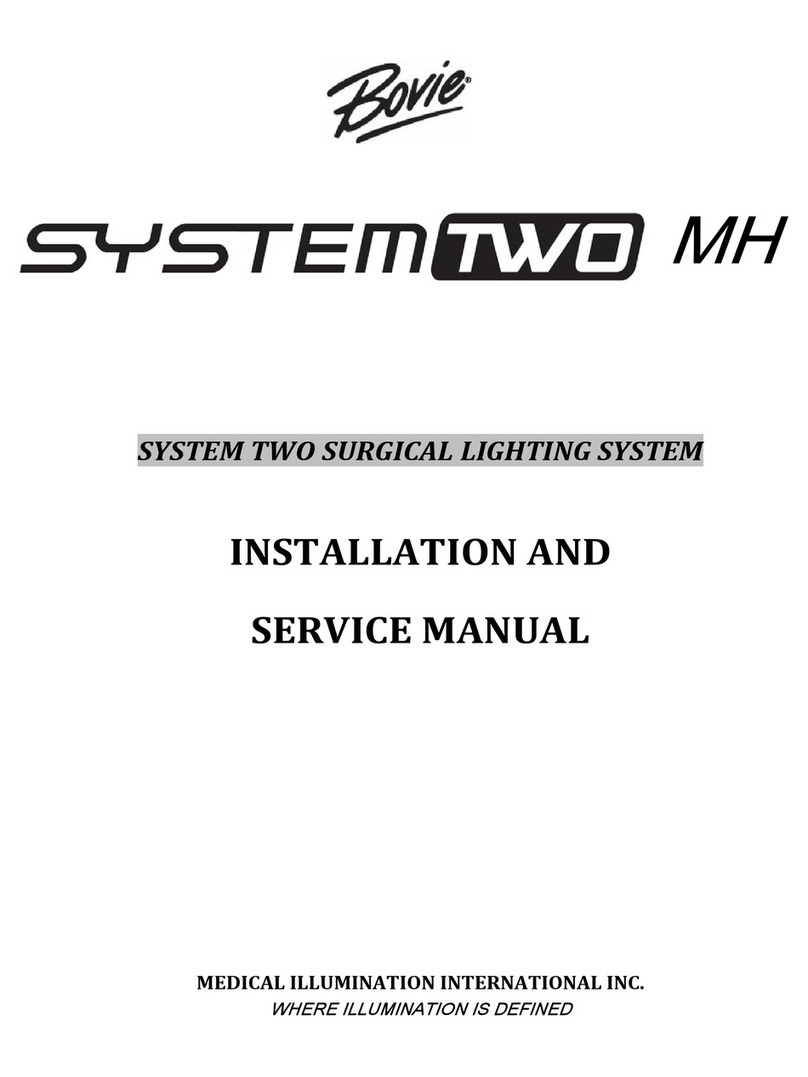
Bovie
Bovie System Two MH Manual

Bovie
Bovie Aaron 950 User manual
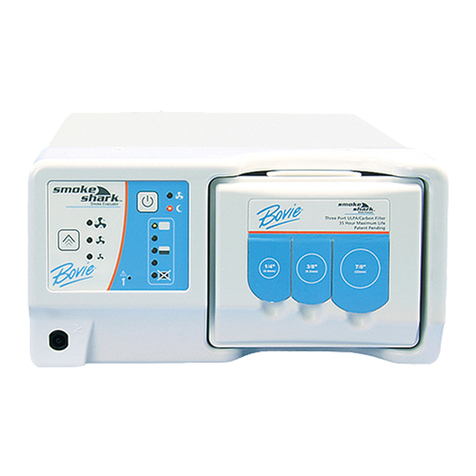
Bovie
Bovie Smoke Shark II User manual
Bovie
Bovie Icon Gi User manual

Bovie
Bovie Aaron 1250 User manual
